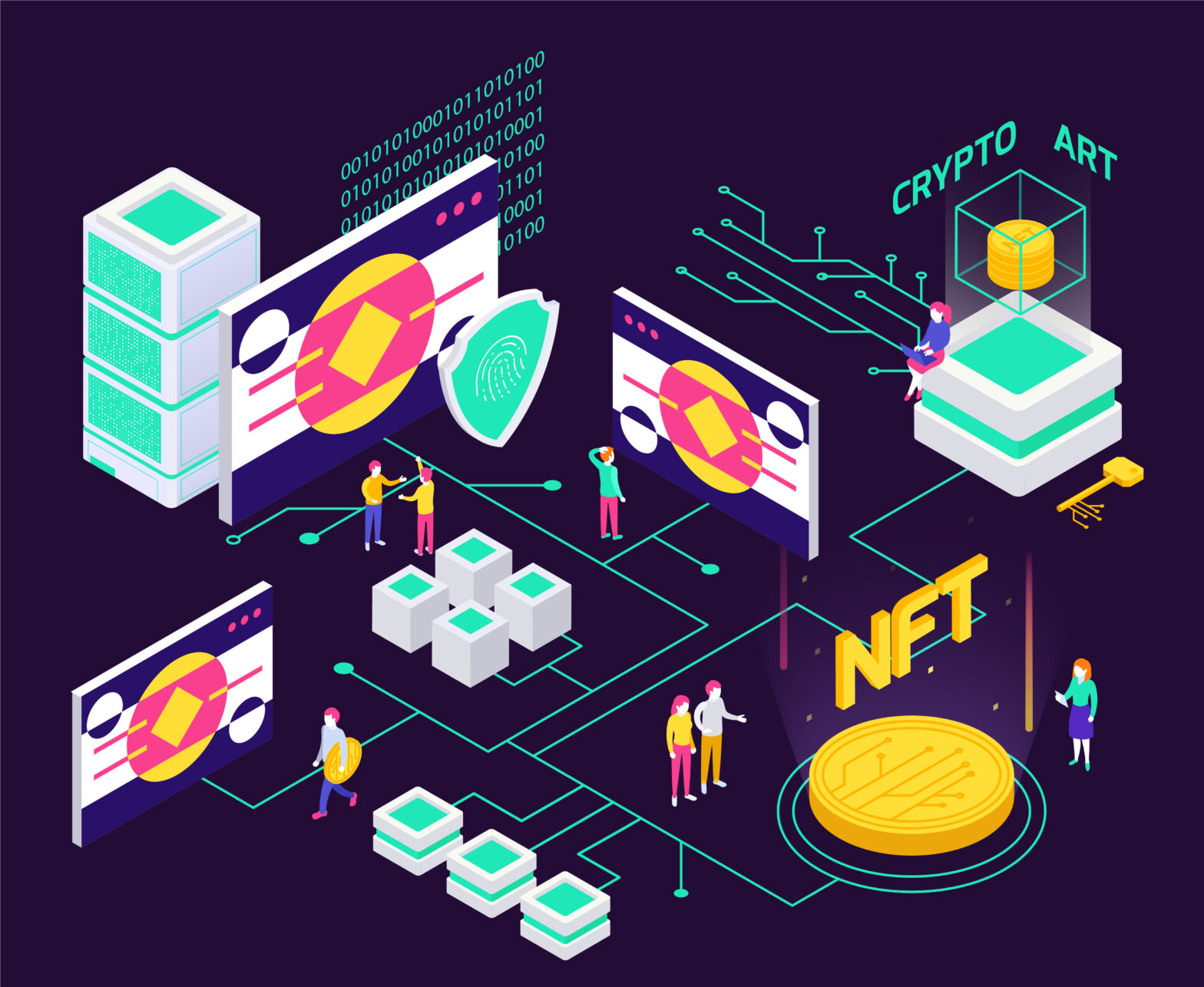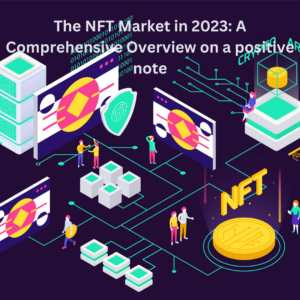
The NFT Market in 2023: A Comprehensive Overview on a positive note
Introduction
The Non-Fungible Token (NFT) market has experienced a remarkable evolution since its inception. In 2023, the NFT space stands as a testament to the transformative power of blockchain technology and digital ownership. This comprehensive review will delve into the various facets of the NFT market, exploring its growth, challenges, innovations, and potential future directions.
The Explosive Growth
The year 2023 witnessed explosive growth in the NFT market. While NFTs began to gain widespread attention in the art and gaming sectors in the previous years, 2023 marked the point where NFTs penetrated various industries. Key factors contributing to this growth include:
Diverse Use Cases:
NFTs have moved beyond digital art and collectibles. They now encompass music, literature, fashion, real estate, and even personal identity verification, showcasing their adaptability across industries.
Celebrity Engagement:
High-profile celebrities and influencers increasingly embraced NFTs, bringing mainstream recognition to the space. Iconic figures like musicians, athletes, and actors collaborated with NFT platforms, launching exclusive collections and digital experiences.
Blockchain Scalability:
Scalability solutions like Layer-2 and Layer-3 solutions have alleviated some of the congestion and high gas fees on popular blockchain networks, making NFT transactions more accessible.
Marketplaces and Infrastructure:
NFT marketplaces and platforms evolved to provide better user experiences. Improved interfaces, search functionalities, and integration with digital wallets have made it easier for creators and collectors to engage with NFTs.
Legal Frameworks:
Governments and regulatory bodies have started to develop frameworks to address NFT taxation, intellectual property rights, and fraud prevention, adding a layer of legitimacy to the market.
Challenges and Controversies
The NFT market’s rapid growth hasn’t come without its fair share of challenges and controversies:
Environmental Concerns:
The energy consumption associated with blockchain technology, particularly on networks like Ethereum, drew criticism for its environmental impact. Many projects are now actively working on transitioning to more sustainable solutions.
Market Saturation:
The proliferation of NFTs led to concerns of oversaturation, making it difficult for individual creators to gain visibility. This issue prompted discussions about curation and quality control.
Copyright and Plagiarism:
The NFT space saw several instances of copyright infringement and plagiarism, leading to disputes between creators and collectors. The need for robust intellectual property protection mechanisms became evident.
Speculation and Volatility:
Some speculated that the NFT market was a bubble waiting to burst. The volatile nature of NFT prices, driven by speculation, raised concerns about the long-term sustainability of the market.
Innovations and Trends
Despite these challenges, the NFT market continued to evolve, fostering innovations and trends:
Metaverse Integration:
NFTs found a natural home in the growing metaverse trend. Virtual worlds and gaming environments increasingly used NFTs for in-game assets, land ownership, and virtual fashion, enabling true ownership within these digital realms.
NFT Utility:
NFTs became more than just digital collectibles. They unlocked access to exclusive content, experiences, and even governance rights within decentralized organizations, blurring the lines between ownership and participation.
Fractional Ownership:
Projects introduced fractional ownership of NFTs, allowing multiple investors to share ownership of high-value assets, making NFT investments more accessible and liquid.
Interoperability:
Cross-chain NFTs gained popularity, enabling assets to move seamlessly between different blockchain networks, increasing their utility and potential liquidity.
NFT Gaming:
NFTs integrated deeply into the gaming industry, offering players true ownership of in-game assets, provable scarcity, and the ability to trade assets across games.
The Future of NFTs
Looking ahead, several key developments may shape the future of the NFT market:
Regulation and Compliance:
Governments worldwide are likely to introduce more comprehensive regulations for NFTs to address legal concerns, taxation, and fraud prevention.
Sustainability:
Blockchain networks are expected to continue transitioning toward more eco-friendly consensus mechanisms, addressing environmental concerns.
Market Consolidation:
The NFT market may see consolidation as dominant marketplaces and platforms emerge, streamlining the user experience and improving curation.
Integration into Everyday Life:
NFTs could become part of everyday life, from ticketing and identity verification to ownership of physical assets via digital representation.
New Use Cases:
As blockchain technology advances, new and unexpected use cases for NFTs are likely to emerge, pushing the boundaries of what is possible in the digital ownership space.
Conclusion
The NFT market in 2023 reflects the ever-evolving nature of digital ownership and blockchain technology. While it has faced challenges and controversies, its growth, innovations, and the promise of a more integrated and sustainable future suggest that NFTs are here to stay. As the market matures and adapts, it will continue to reshape industries and how we perceive and interact with digital assets in the years to come.
Search
Recent NFT News
Reasons You Should...
9 months ago
The NFT Market in ...
11 months ago
Comparing Environm...
12 months ago
Pump and Dump Sche...
12 months ago
The Ultimate Guide...
1 year ago








